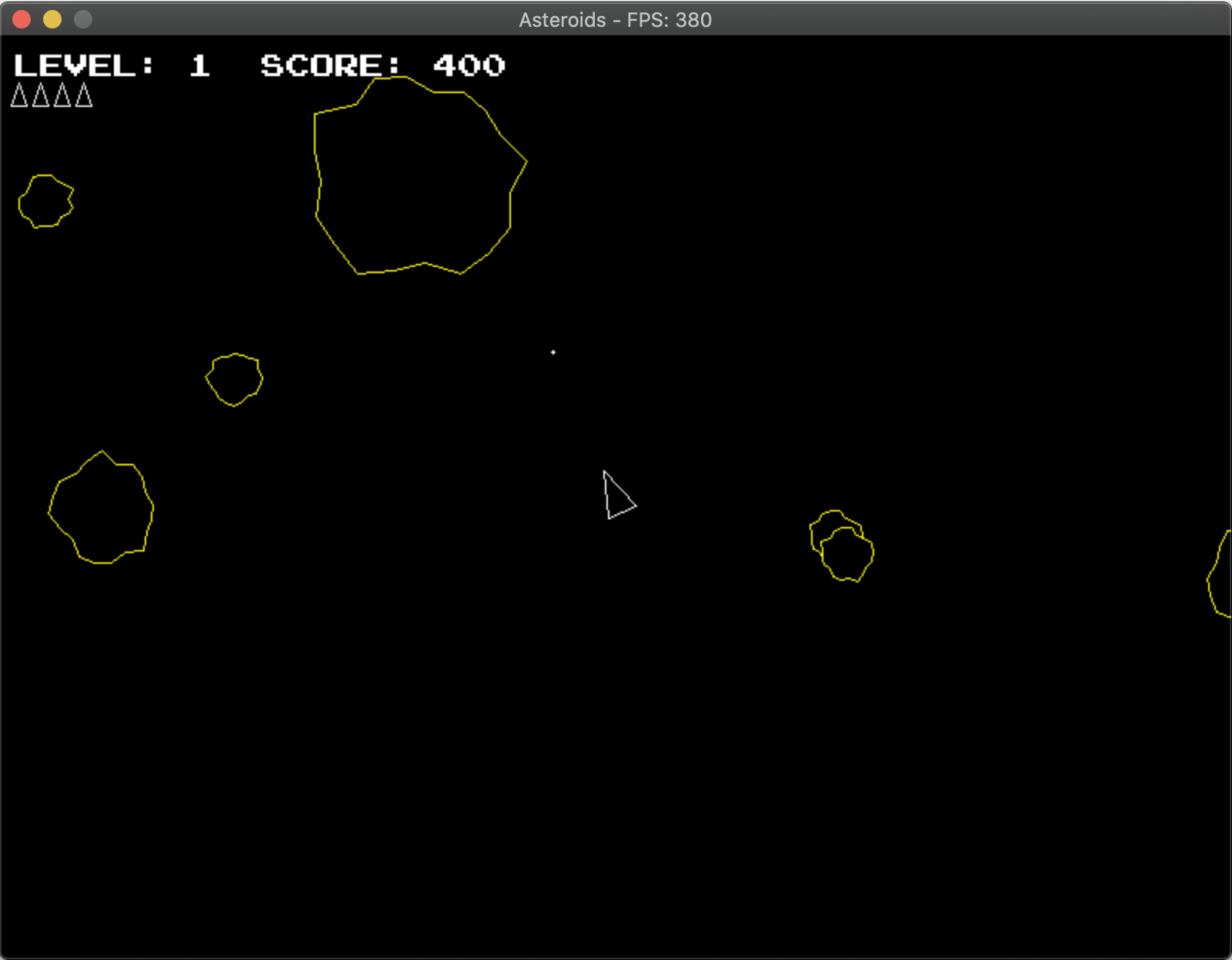
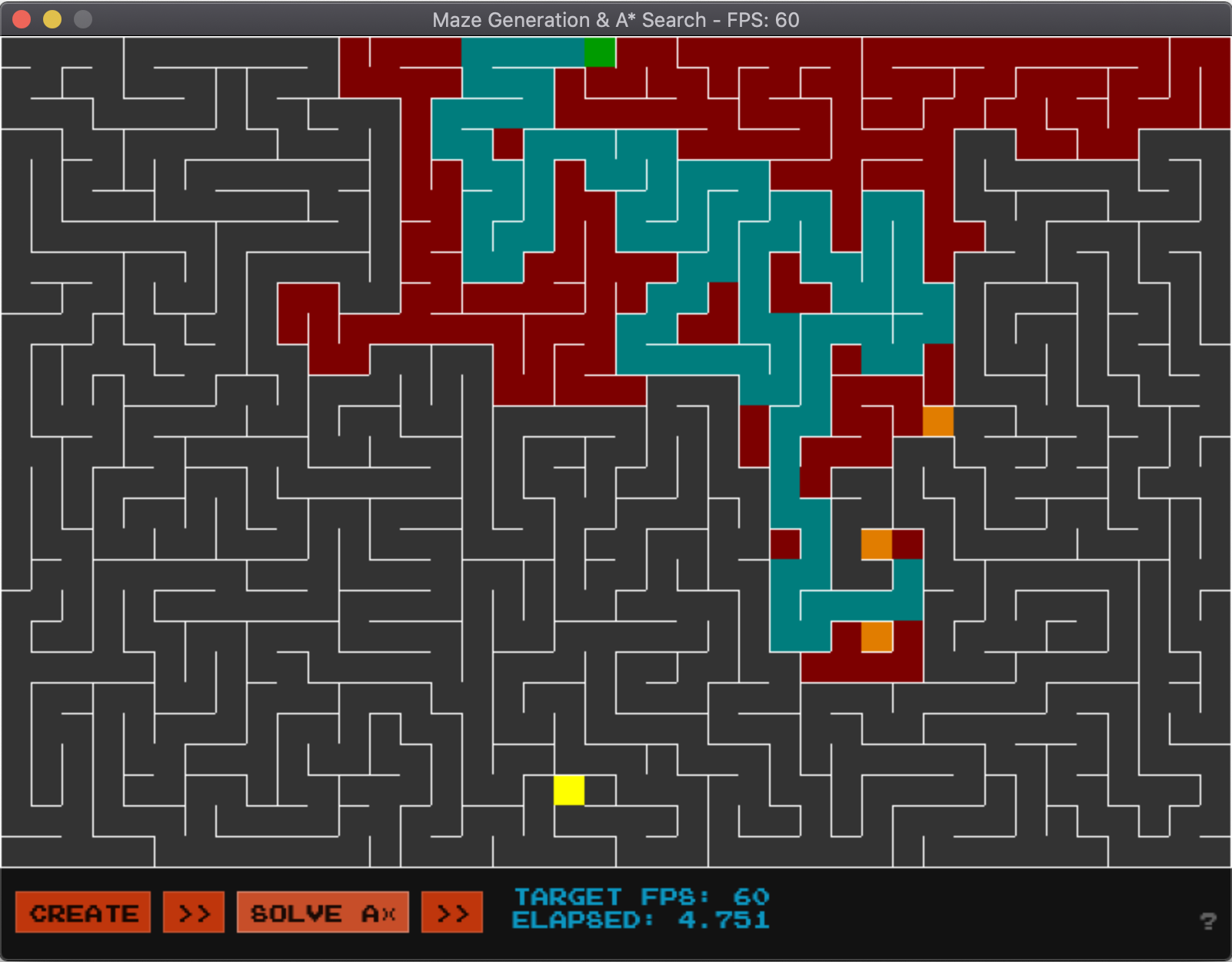
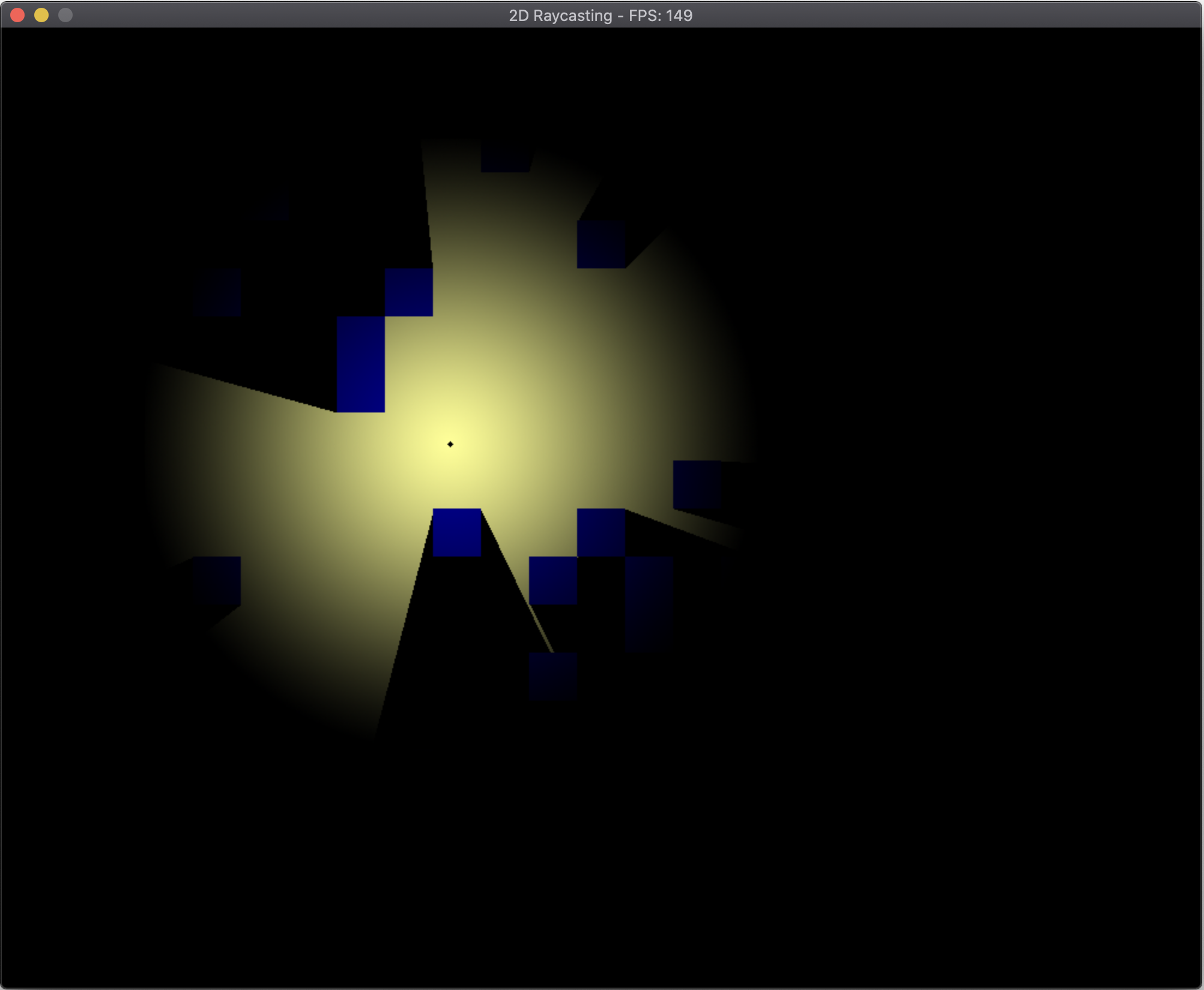
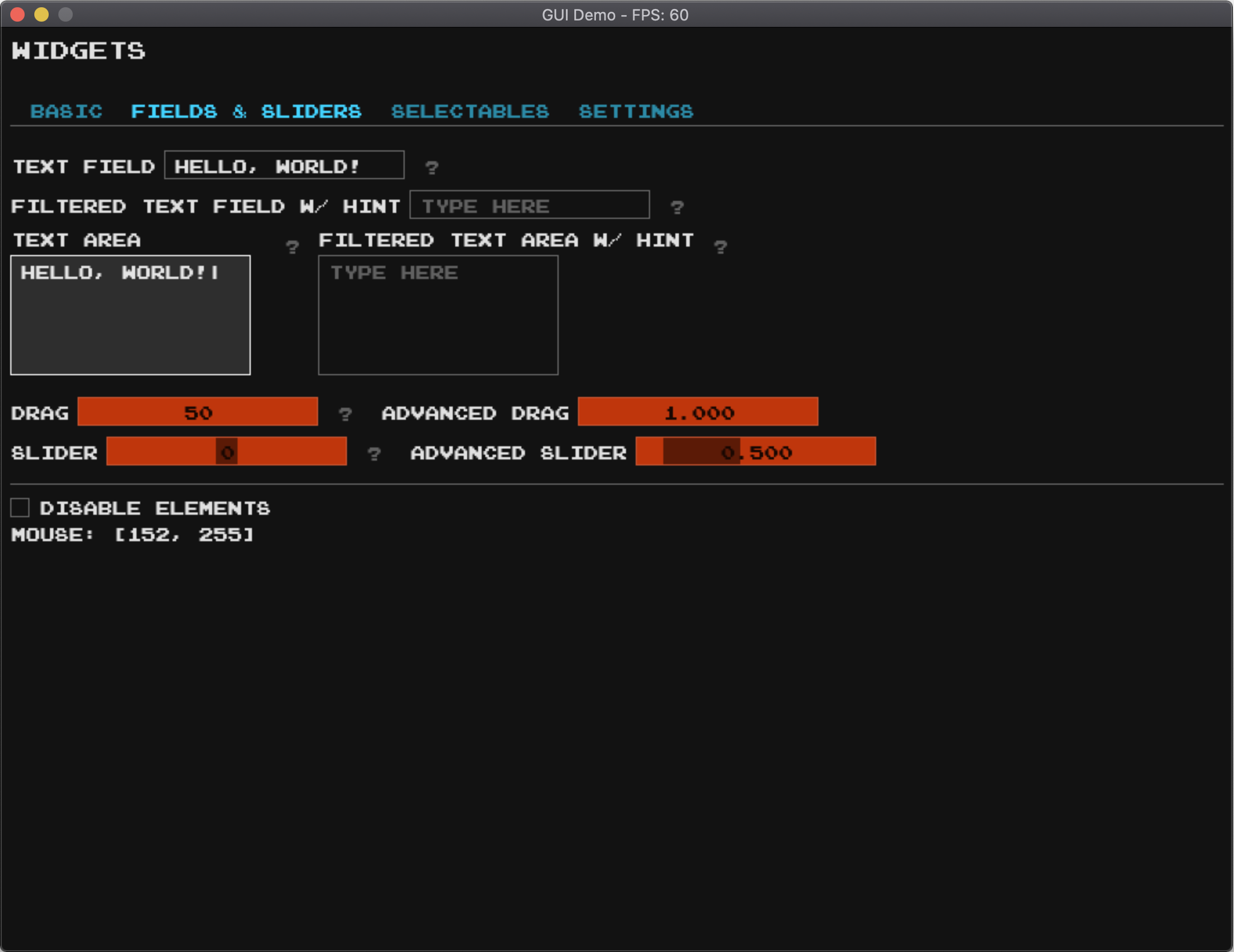
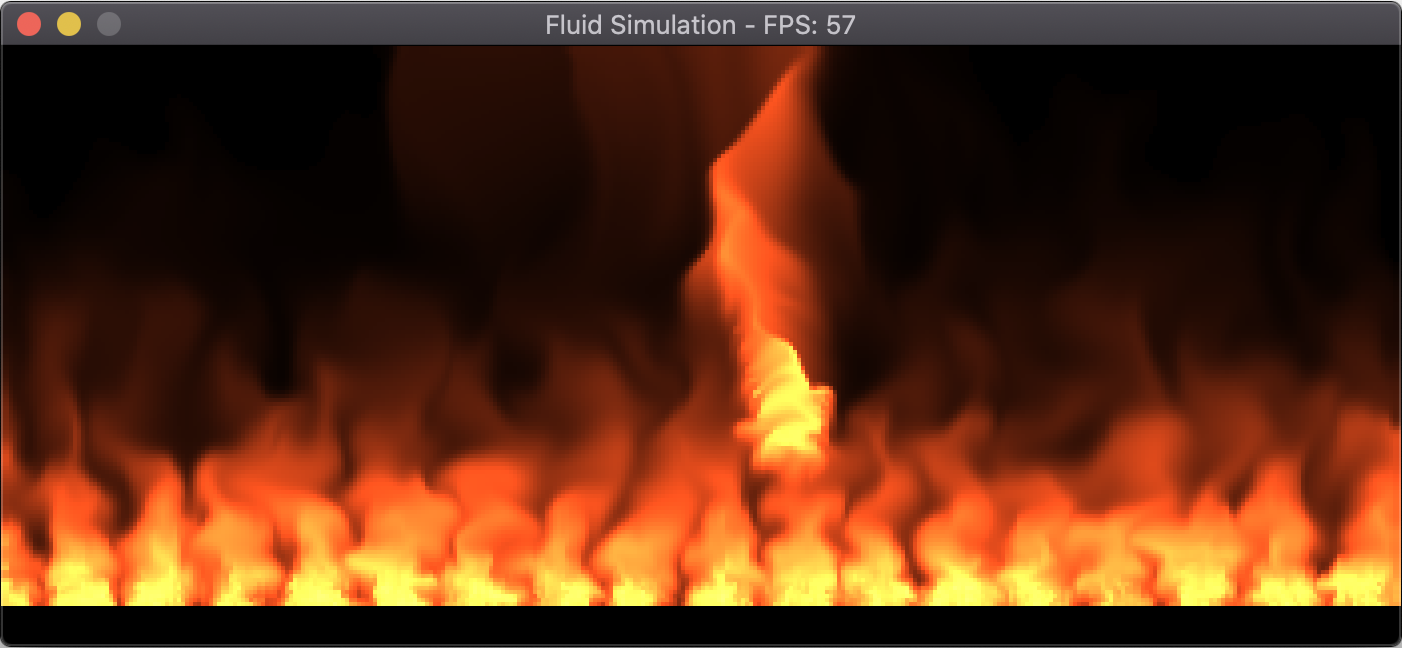
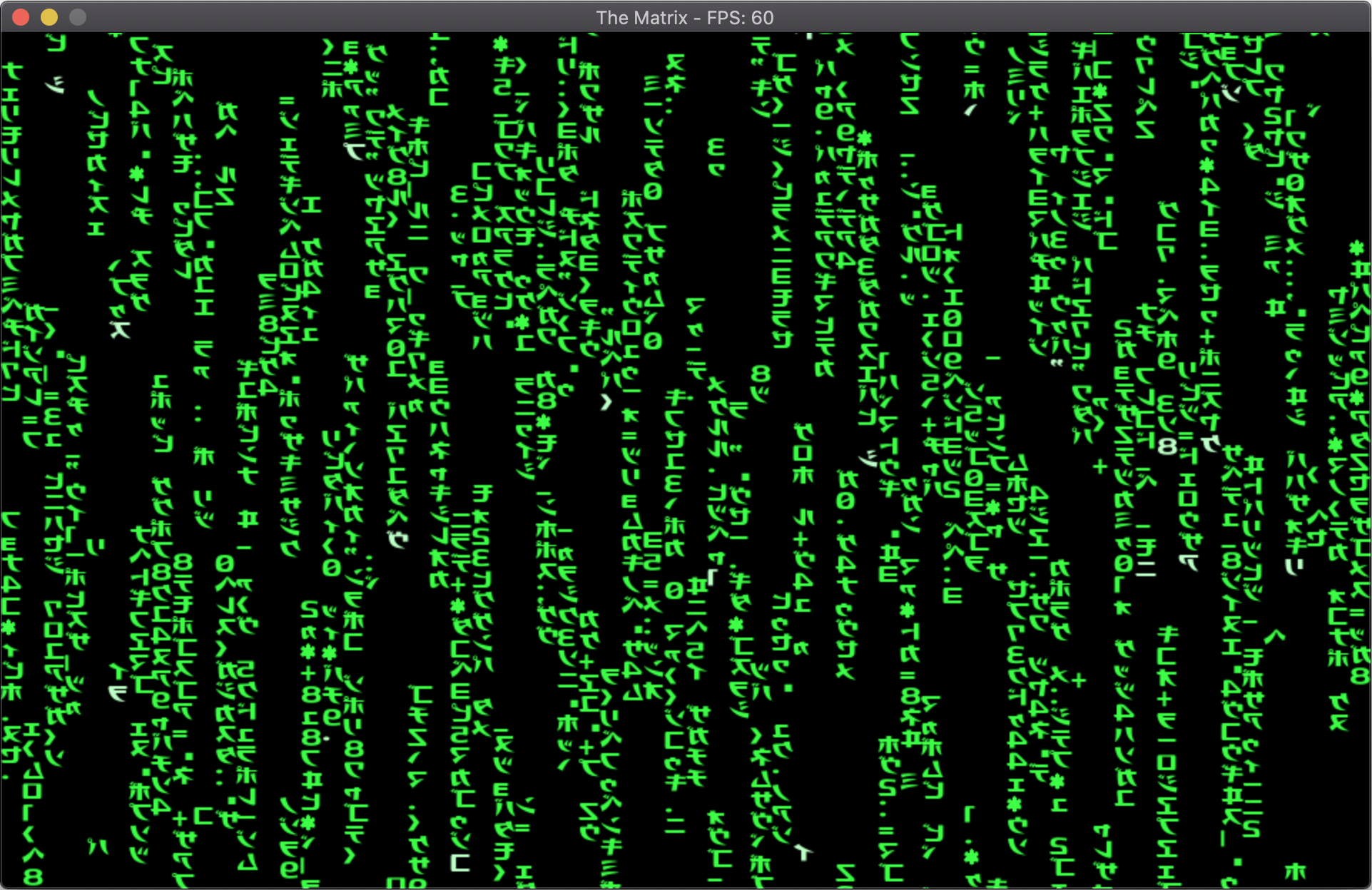
![Build Status] ![Latest Version] ![Doc Status] ![Downloads] ![License]
pix_engine is a cross-platform graphics & UI library for simple games,
visualizations, digital art, and graphics applications written in Rust,
supporting SDL2 (and soon Web-Assembly!) renderers.
The primary goal of this library is to be simple to setup and use for graphics or algorithm exploration and is not meant to be as fully-featured as other, larger graphics libraries.
It is intended to be more than just a toy library, however, and can be used to
drive real applications. The Tetanes NES emulator, for example uses
pix_engine for rendering, window and event handling.
Some examples of things you can create with pix-engine:
The current minimum Rust version is 1.59.0.






First and foremost you'll need Rust installed! Follow the latest directions at https://www.rust-lang.org/learn/get-started.
When building or running applications for a desktop target such as macOS,
Linux, or Windows and not a Web-Assembly target, you must install
SDL2 libraries. Note for windows: You may need to install
Visual Studio C++ Build Tools.
There are several options for installing SDL2, but these are the most common:
macOS, a package management tool like apt for
Linux or MSVC for Windows.For more details and installation options see the rust-sdl2 documentation.
sh
brew install sdl2 sdl2_gfx sdl2_image sdl2_mixer sdl2_ttf
Note: The minimum SDL2 version is 2.0.20. Some package managers may not have
the latest versions available.
Ubuntu:
sh
sudo apt-get install libsdl2-dev libsdl2-gfx-dev libsdl2-image-dev libsdl2-mixer-dev libsdl2-ttf-dev
Fedora:
sh
sudo dnf install SDL2-devel SDL2_gfx-devel SDL2_image-devel SDL2_mixer-devel SDL2_ttf-devel
Arch:
sh
sudo pacman -S sdl2 sdl2_gfx sdl2_image sdl2_mixer sdl2_ttf
SDL2 MSVC development libraries from
https://www.libsdl.org/download-2.0.php e.g. (SDL2-devel-2.0.20-VC.zip).SDL2_image, SDL2_mixer, and SDL2_ttf MSVC
development libraries from
https://www.libsdl.org/projects/. e.g. (SDL2_image-devel-2.0.5-VC.zip)..zip file into a folder.lib\x64\C:\Users\{Username}\.rustup\toolchains\{current toolchain}\lib\rustlib\{current toolchain}\lib
where {current toolchain} is likely stable-x86_64-pc-windows-msvc.rustup, See rust-sdl2 for more info on
Windows installation.dll files:
lib\x64\cargo project next to Cargo.toml.MSVC binaries for SDL2 are also present in this repository under the lib
folder.
Creating a visual or interactive application using pix-engine requires
implementing only a single method of the AppState trait for your
application: AppState::on_update which gets executed as
often as possible. Within that function you'll have access to a mutable
PixState object which provides several methods for modifying
settings and drawing to the screen.
AppState provides additional methods that can be implemented to
respond to user events and handle application startup and teardown.
Here's an example application which simply draws a circle following the mouse and renders it white or black depending if the mouse is held down or not:
```rust norun use pixengine::prelude::*;
struct MyApp;
impl AppState for MyApp {
// Set up application state and initial settings. PixState contains
// engine specific state and utility methods for actions like getting mouse
// coordinates, drawing shapes, etc. (Optional)
fn on_start(&mut self, s: &mut PixState) -> PixResult<()> {
// Set the background to GRAY and clear the screen.
s.background(Color::GRAY);
// Change the font family to NOTO and size to 16 instead of using the
// defaults.
s.font_family(Font::NOTO)?;
s.font_size(16);
// Returning `Err` instead of `Ok` would indicate initialization failed,
// and that the application should terminate immediately.
Ok(())
}
// Main update/render loop. Called as often as possible unless
// `target_frame_rate` was set with a value. (Required)
fn on_update(&mut self, s: &mut PixState) -> PixResult<()> {
// Set fill color to black if mouse is pressed, otherwise wite.
if s.mouse_pressed() {
s.fill(color!(0));
} else {
s.fill(color!(255));
}
// Draw a circle with fill color at the mouse position with a radius of
// 80.
let m = s.mouse_pos();
s.circle([m.x(), m.y(), 80])?;
Ok(())
}
// Clean up any state or resources before exiting such as deleting temporary
// files or saving game state. (Optional)
fn on_stop(&mut self, s: &mut PixState) -> PixResult<()> {
Ok(())
}
}
fn main() -> PixResult<()> { let mut engine = PixEngine::builder() .withdimensions(800, 600) .withtitle("MyApp") .withframerate() .resizable() .build()?; let mut app = MyApp; engine.run(&mut app) } ```
This library uses the log crate. To leverage
logging in your application, choose one of the supported logger implementations
and initialize it in your main function.
Example using env_logger:
```rust ignore fn main() -> PixResult<()> { env_logger::init();
let mut engine = PixEngine::builder()
.with_dimensions(800, 600)
.with_title("MyApp")
.build()?;
let mut app = MyApp;
engine.run(&mut app)
} ```
serde - Adds serde Serialize/Deserialize implementations for all
enums/structs.
backtrace - Enables the backtrace feature for anyhow, which allows printing
backtraces based on environment variables outlined in std::backtrace. Useful for debugging.
sdl2 to use opengl as its renderer. This feature is disabled by
default, allowing sdl2 to use whichever renderer it defaults to on the target system. For
example, macOS defaults to metal.See the github issue tracker.
Licensed under either of
at your option.
Unless you explicitly state otherwise, any contribution intentionally submitted for inclusion in the work by you, as defined in the Apache-2.0 license, shall be dual licensed as above, without any additional terms or conditions.
For issue reporting, please use the github issue tracker. You can also contact me directly at https://lukeworks.tech/contact/.
This has been a true passion project for several years and I can't thank the open source community enough for the all the amazing content and support.
A special shout out to the following projects which heavily inspired the implementation and evolution of this crate: